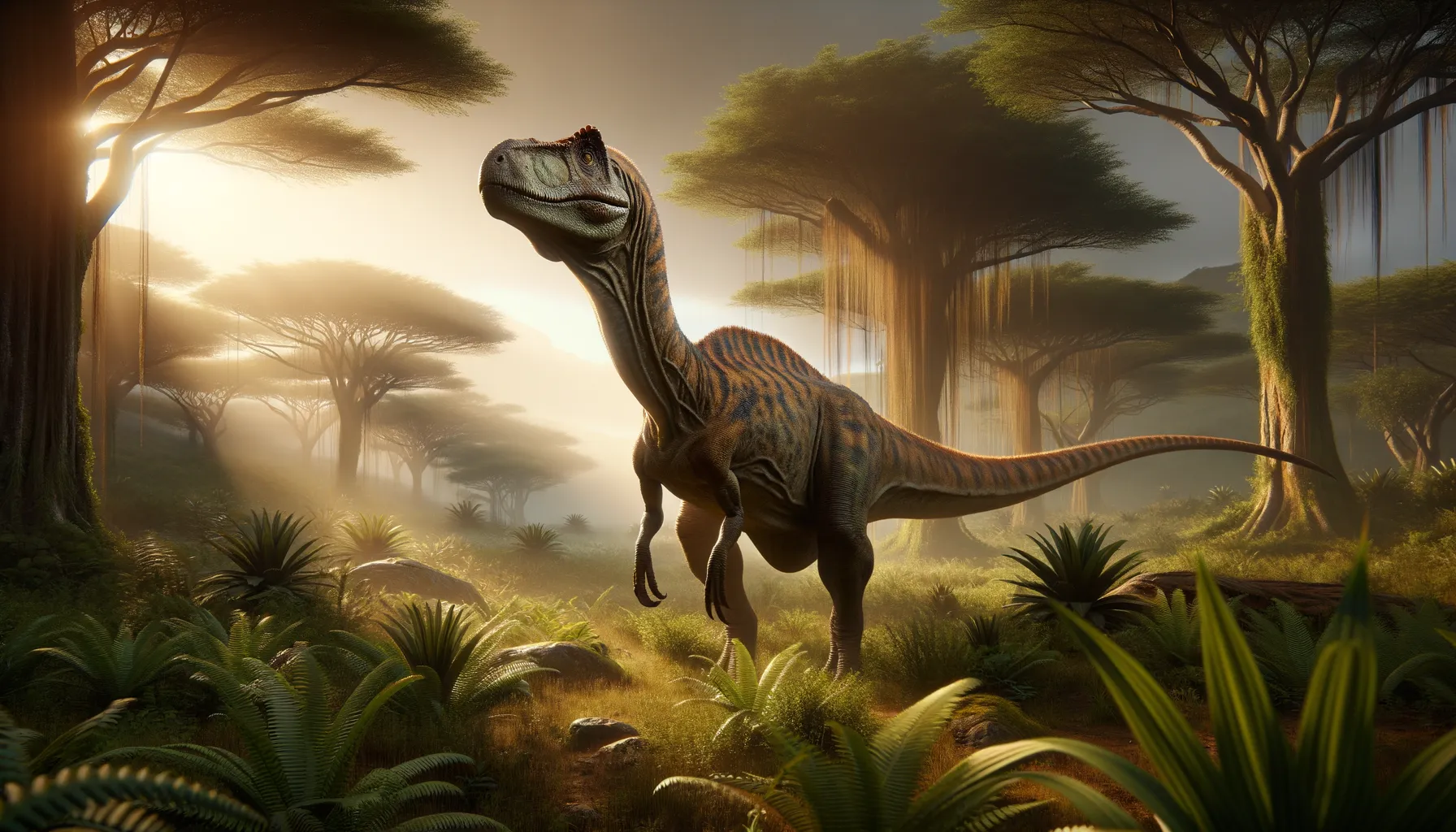
Pulanesaura
Explore the world of the rain lizard!
Period
Jurassic
Length
About 8 meters from head to tail.
Height
Approximately 3 meters tall.
Weight
Estimated to weigh around 6,000 kg.
Pulanesaura, known as the 'rain lizard', was a plant-eating dinosaur from the Jurassic period. It roamed what is now South Africa, contributing to our understanding of early sauropods. With its long neck and massive body, it was adapted to grazing on high vegetation. Its discovery has helped paleontologists learn more about the early evolution of sauropods and their dietary habits.
Diet
Pulanesaura primarily consumed plant material, thanks to its long neck that enabled it to reach high vegetation. It fed on ferns, cycads, and other Jurassic flora, playing a crucial role as a herbivore in its ecosystem.
Hunting
Being a herbivore, Pulanesaura did not hunt for prey. It likely spent much of its day grazing, using its robust limbs and height to forage for food higher up than many contemporaries.
Environmental challenges
Pulanesaura had to navigate periods of seasonal drought that affected plant availability. Additionally, competition for resources like plants could be fierce with other herbivores occupying the same niche. It also faced predation threats from larger carnivorous dinosaurs of the time.
Speed
Slow-mover due to its large size.
Lifespan
Estimated 60 to 80 years like other sauropods.
First discovery
Discovered in South Africa in 2004.
Fun Facts
- Pulanesaura means 'rain lizard,' named so because its fossils were discovered during a rainy expedition in South Africa.
- This dinosaur lived approximately 200 million years ago during the Early Jurassic period.
- Pulanesaura was a relatively small sauropod, a group known for their long necks and tails.
- Unlike many larger sauropods, Pulanesaura had a more horizontal neck, which suggests it grazed on low-lying plants.
- The discovery of Pulanesaura helped scientists understand the early evolution of sauropods and their diversification.
- Fossils of Pulanesaura were found in the Free State Province of South Africa.
- Pulanesaura had a more primitive body structure compared to its giant sauropod relatives, giving insights into the gradual size increase in sauropod evolution.
Growth and Development
As sauropods, Pulanesaura underwent significant growth periods, increasing its size rapidly in the early stages of life. Juvenile Pulanesaura were much more vulnerable to predators due to their smaller size. Growth rates varied depending on environmental factors such as food availability.
Habitat
Pulanesaura lived in what is now recognized as the Highveld region of Southern Africa. The habitat consisted of vast floodplains, rich with a variety of plant life ideal for its dietary needs. These regions likely had a mix of forests providing both food and shelter.
Interaction with other species
Pulanesaura coexisted with other herbivorous and carnivorous dinosaurs, each playing specific roles in the ecosystem. It might have traveled in herds to protect against predators. Its size probably deterred smaller predators but made it a potential target for larger ones.
Natural lifespan
Its lifespan, like other sauropods, could be as long as 80 years.
Reproduction
Pulanesaura likely laid eggs, similar to other sauropods. Nesting behaviors could have included building nests in secluded areas to keep eggs safe from predators. Parental care is poorly understood but likely minimal.
Social behaviour
It is believed that Pulanesaura lived in groups for protection against predators. Herd behavior would have provided advantages in finding food and protecting young and vulnerable members.
Fossil locations
Fossils of Pulanesaura have been found primarily in the Clarens Formation of South Africa. These discoveries provide insights into the early Jurassic ecosystems and sauropod development. The fossils indicate a once-flourishing population in this region.
